Share This Article
First Glimpse
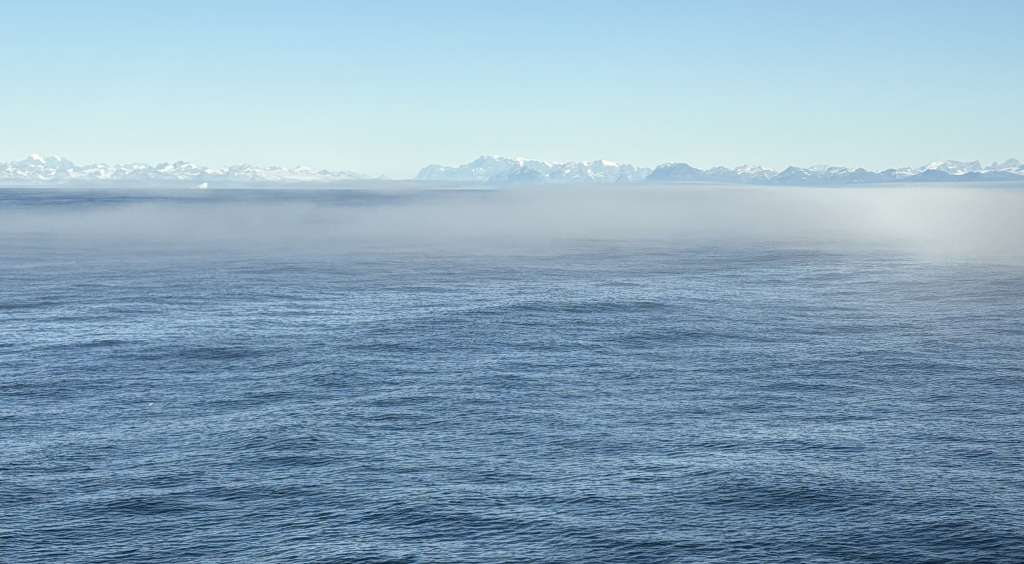
The ship passage from Iceland to the southern tip of Greenland was two days north across the gray Arctic Sea. We arrived at 6 am on a cloudless morning under brilliant blue skies and spent the entire day traversing the island via a fjord running from the east to west coast.
Entering the fjord, the first change to notice was the color of the water. I was not expecting Caribbean blue/green but here it is. We spent the next 8 hours bundled up on deck gazing at mountain ranges, glaciers and waterfalls in an ever changing landscape.
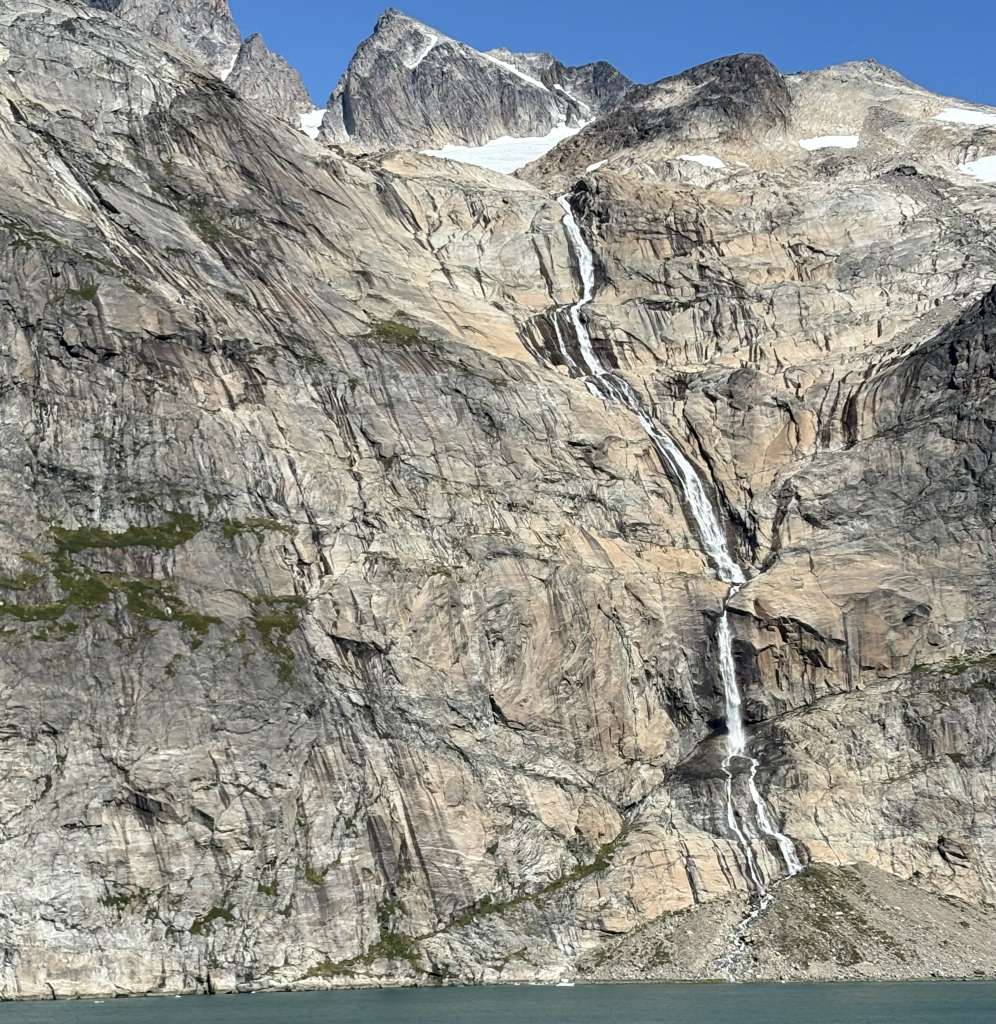
This is the first waterfall we passed.
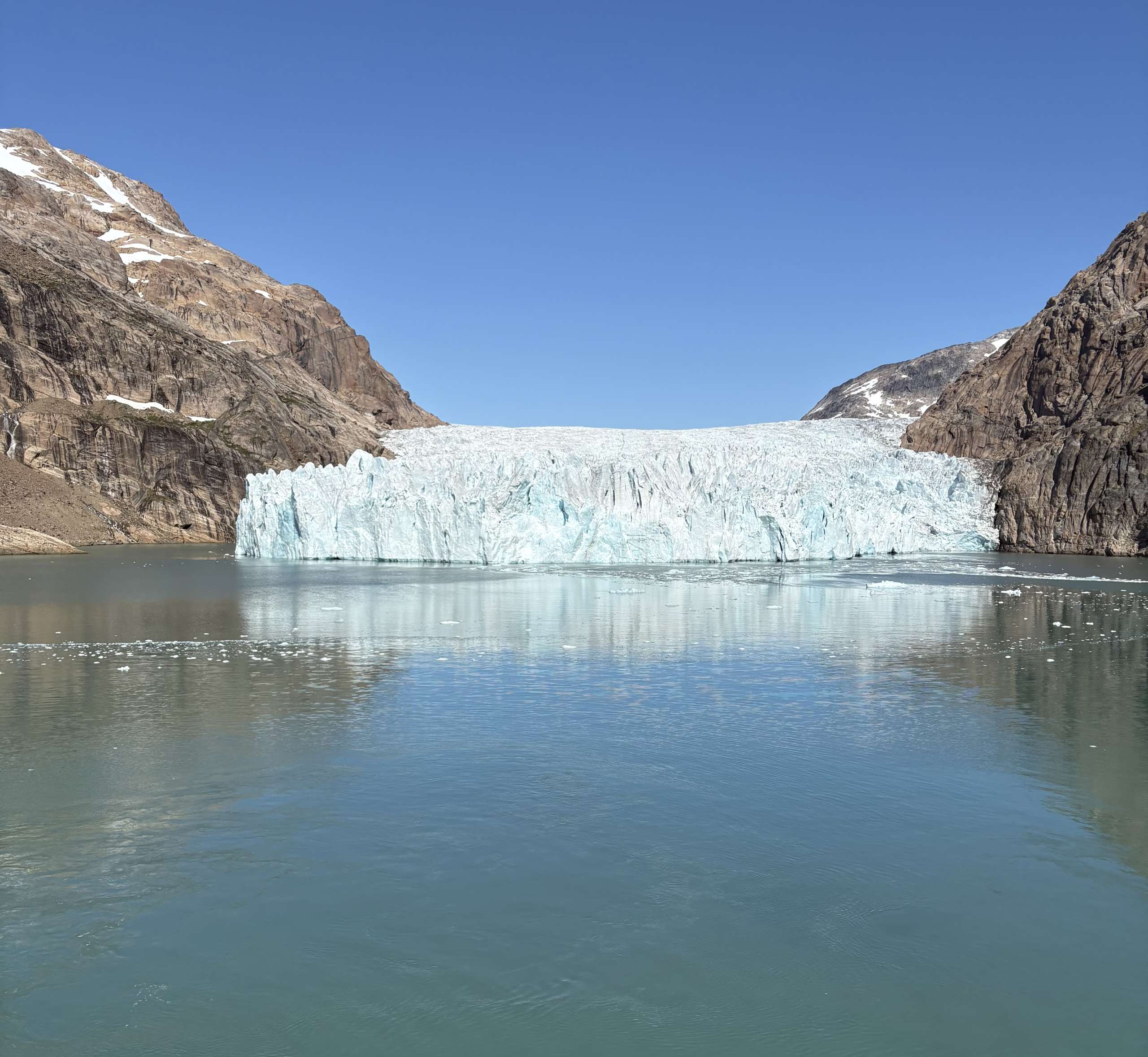
One of many glaciers.
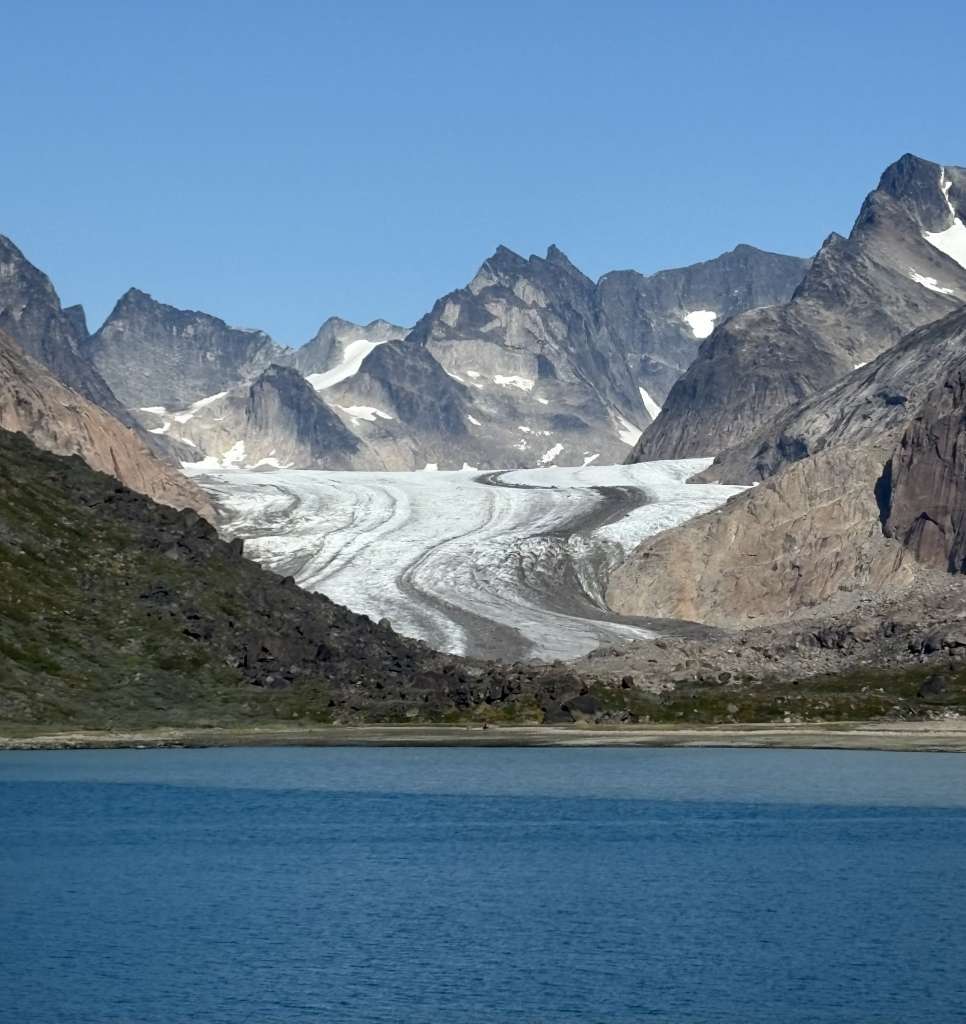
It appears some folks were skiing here recently. There is enough land to dock a boat and walk up the slopes. Little buildable land exists in Greenland. The mountains mostly stop/begin at the water’s edge. No room for a boat to dock. And, other than mountains, there is the Ice Cap, which is a solid mass covering 80% of the island. Other than the capital, Nuuk, which houses 20,000 people, the land at the water’s edge can support villages of no more than 200-300.
Life in Nuuk
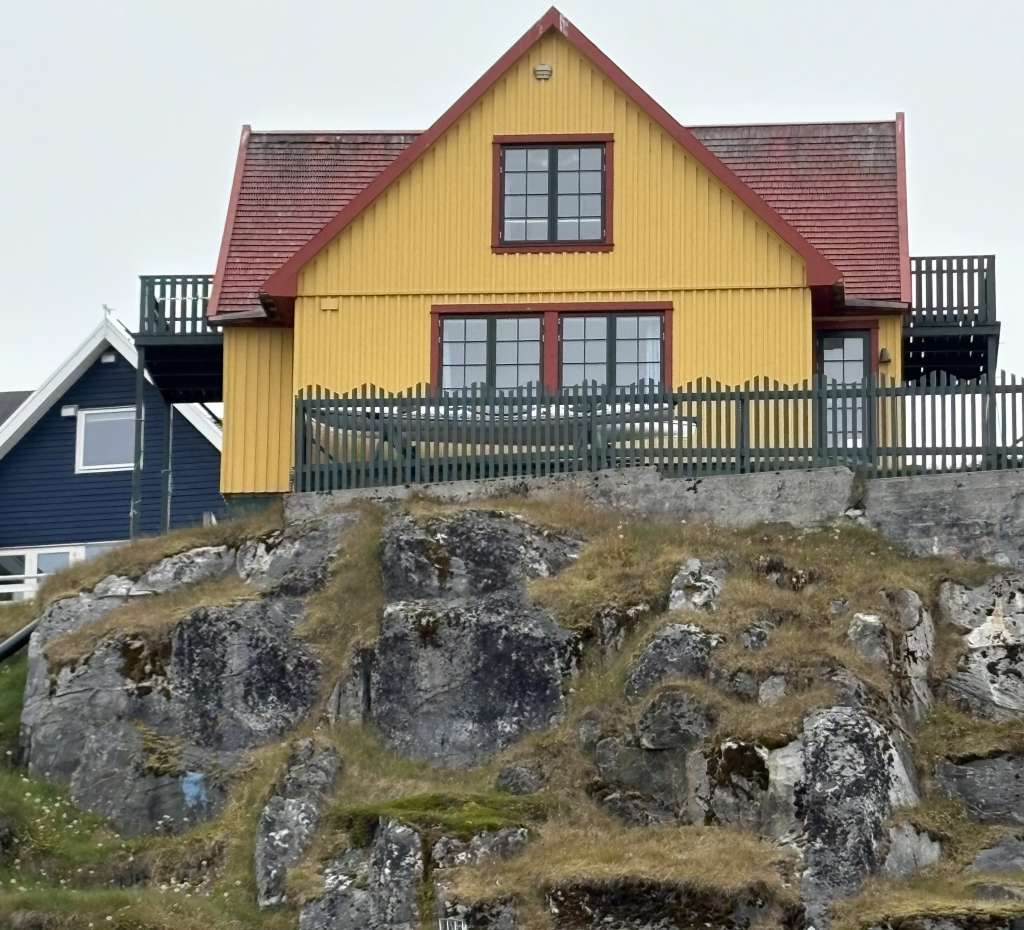
This house is one of the few original houses made of imported wood in the early 1800s. Painted in primary colors, houses like these are picture postcard perfect and are the ones you will see in advertisements for visiting Nuuk. Since no trees grow on the island, wood is extremely expensive and has been forbidden to import for over a century. Other than mosses, nothing grows here. No flowers, no vegetables, no fruits, no livestock other than undomesticated animals like reindeer. Seals are in abundance, as is arctic char. People in small villages get Vitamin C from seaweed and eating certain parts of seal meat. Today, virtually everything is imported.
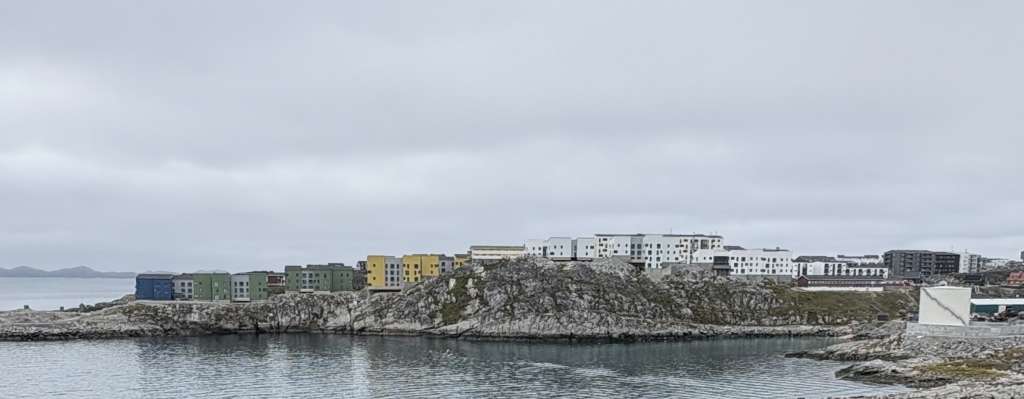
Except for the smattering of older primary colored wood houses, Nuuk looks mostly like this: Soviet era housing of stacked boxcars and concrete block apartments. This type of building may not be painted in primary colors. Since the ground is either solid rock or ice, electricity, water and sewer pipes cannot be buried so lie strewn across the rocks near the water’s edge. The climate is inhospitable year round. The brief summer months have sunshine and warmer days but biting black flies, requiring wearing netting since they are immune to the usual insect repellants. Fog is ubiquitous and some form of precipitation is expected daily.
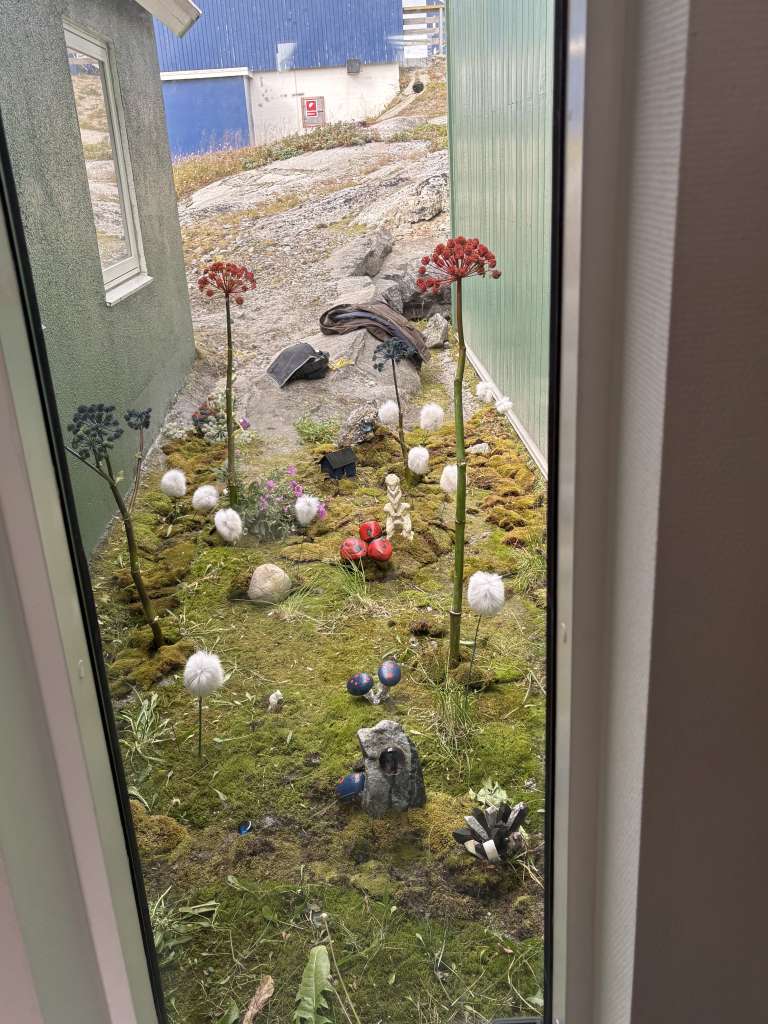
What is truly astonishing about Greenland is the people and their creativity. I took this picture while an artist was installing (you can see his jacket and a satchel on the ground) a whimsical “garden” outside the Fine Arts Museum.
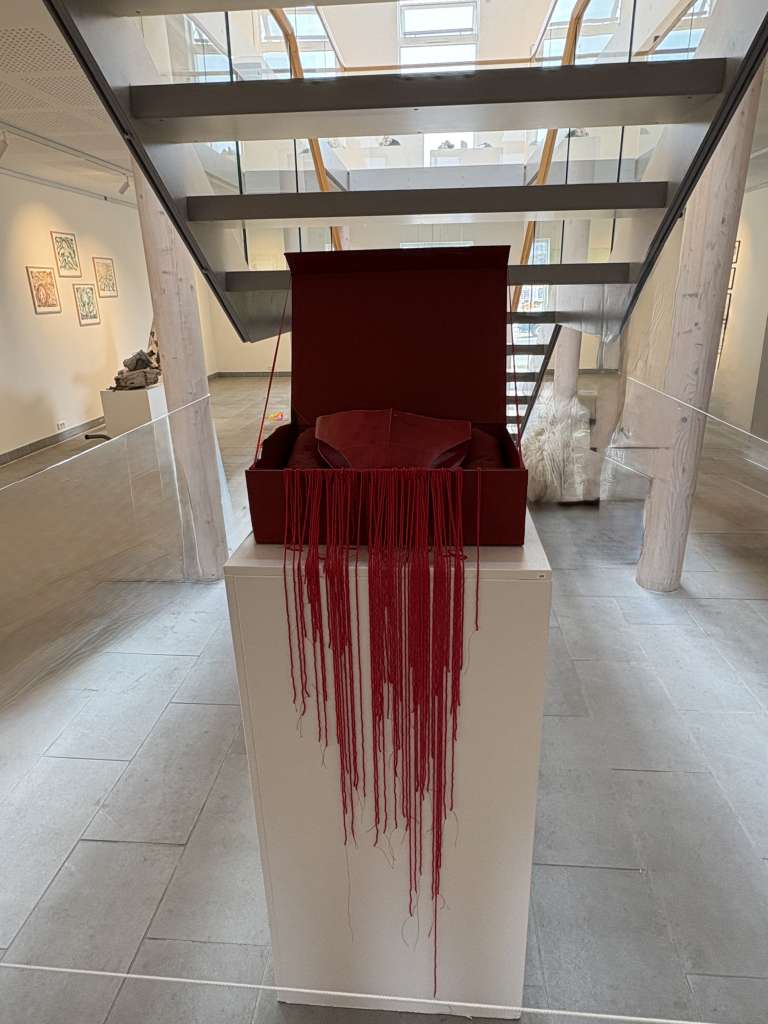
This sculpture broke my heart. I arrived in Nuuk a day after the Danish Prime Minister made a formal apology to the Inuit population in Greenland for involuntarily sterilizing young Inuit women and girls so they could not bear children, thus limiting the number of Inuit citizens the Danish government was responsible for. The suitcase, representing the Danish government, and the female reproductive organs inside it are made of dyed sealskin. The 43,000 beads, dripping down the pedestal represent the estimated unborn Inuit babies. Beading decorates all Inuit clothing, from hats to shoes.

